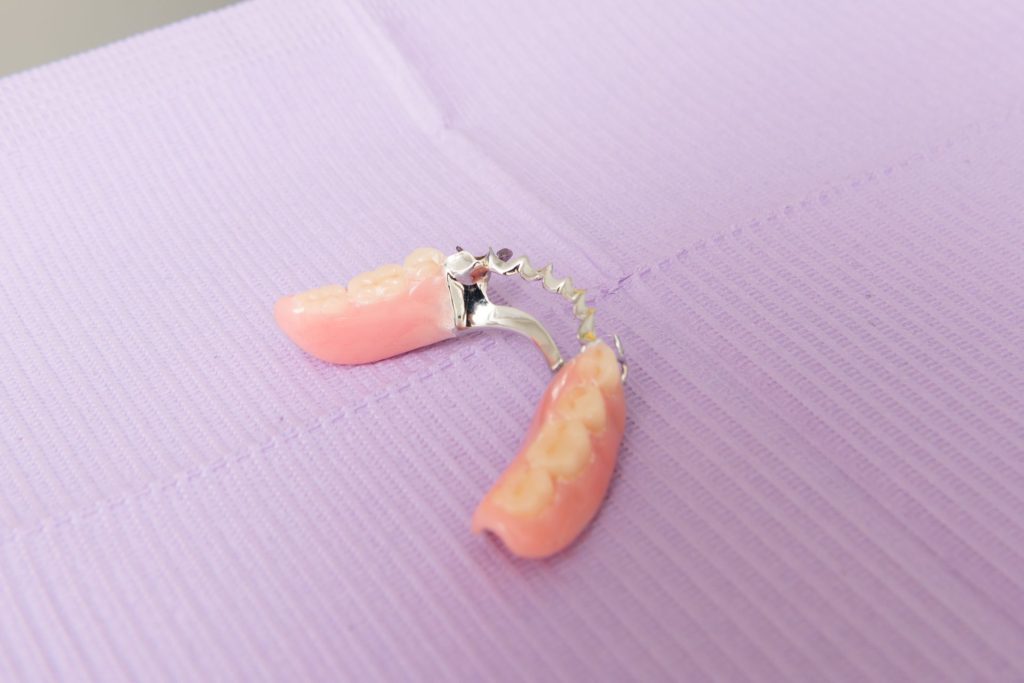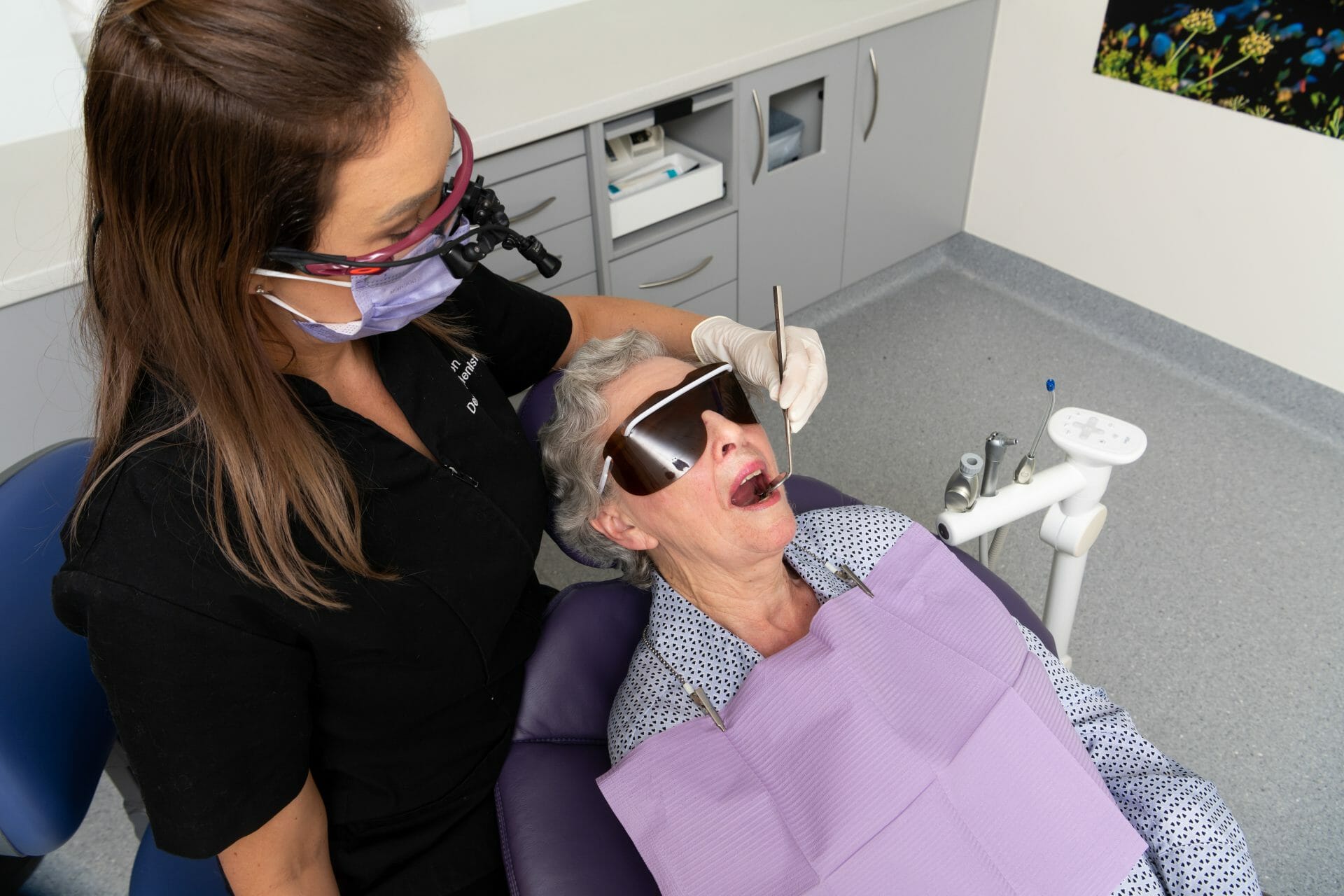Losing teeth isn’t something anyone wants. And it’s more common than people think. It usually happens because of tooth decay, gum disease, or an accident. In Australia, adults have an average of 6 missing teeth. That number goes up with age, from roughly 3 missing teeth in people in their twenties to nearly 14 by the time they hit 65.
So if you’ve got a gap (or a few), you’re not the odd one out. The real question is what should you do about it? Because the reality is that a missing tooth doesn’t only affect your smile. It can throw off your bite, make eating harder, and even affect how your jawbone holds up over time.
At The Village Dentist in Castle Hill, we help people replace missing teeth every day. In this article, we go through the top 5 options for missing teeth. For each option, you’ll find the pros, the cons, the long-term value, and who each one suits best.
These days? You can actually see your new smile before anything happens. You can tweak it. Change your mind. Try again. It’s called Digital Smile Design (or DSD), and it’s basically like test-driving your new smile before you commit to it.
At The Village Dentist in Castle Hill, we’ve used this exact tool to help hundreds of patients build their perfect smile, step by step, with zero guesswork. In this article, we go through what Digital Smile Design actually is, what you can see in your smile preview, why our patients love it, and how the process works at our Castle Hill clinic.
1. Dental implants
A dental implant replaces the whole tooth, not just the bit you see. It starts with a small titanium post placed into your jawbone, where it acts like a new tooth root. Over a few months, the bone grows around it and locks it in. Then a false tooth (usually a crown) is attached on top to match your existing teeth.
Unlike dentures or bridges, implants don’t just fill a gap. They fix the whole problem from the root up. They keep the jawbone strong, don’t rely on nearby teeth for support, and work like a proper tooth. This is why implants are often seen as the best tooth replacement option.
Pros
- Looks, feels, and functions like a real tooth: You can eat, talk, and smile without even thinking about it.
- Preserves the jaw bone: It stops the bone from shrinking after you lose a tooth. This helps keep your face shape and bite stable.
- Stands on its own: It doesn’t rely on other existing teeth for support. So, there’s no need to grind down healthy teeth like you do with a bridge.
- Long-term fix: Once healed, implants rarely need replacing. They’re built to last decades.
- Low maintenance: You can brush, floss, and clean dental implants like regular teeth. There’s no special cleaning routines or removals needed.
Cons
- Upfront cost: Dental implants cost more than other options to begin with. But that usually evens out over time as they don’t need replacing every few years.
- Surgical procedure involved: It’s a small procedure done under local anaesthetic. But you’ll still need time to heal (usually a few months before the permanent tooth goes on).
Long-term value
Implants cost more at the start, but they’re in it for the long haul. They can last 20+ years and usually don’t need replacing. They also stop bone loss and don’t touch your existing teeth, which helps avoid more problems down the line.
Who it suits best
Great for anyone with one or more missing teeth who wants a strong, permanent fix that looks and feels natural. You’ll need healthy bone and gums, but most adults in good health are good candidates.

2. Implant-supported bridges
If you’ve lost a few teeth in a row, a standard implant for each one might be overkill. In cases like this, an implant supported bridge may be a good option. Instead of placing a dental implant for every missing tooth, two (sometimes more) implants are used to anchor a row of replacement teeth. The result is strong, fixed, and natural-looking, and without needing as many implants.
Because it’s supported by implants, not your other teeth, there’s no need to grind anything down. It also helps keep the jawbone healthy at the implant sites.
Pros
- Replaces three or more missing teeth with fewer implants: You don’t need one post per tooth. You’ll just need a few to hold the bridge.
- Preserves bone where it matters: The implants stimulate the jaw and help prevent bone loss.
- Stays firmly in place: Doesn’t shift like a denture and doesn’t rely on your natural teeth.
Cons
- More expensive than a traditional bridge: But still cheaper than placing an implant for every missing tooth.
- Requires surgery: You’ll need healing time after the implants are placed before the final bridge goes in.
Long-term value
These bridges usually last 15–20 years or more. They protect the jawbone and don’t touch nearby teeth, which typically means fewer issues down the line.
Who it suits best
Best for people replacing multiple missing teeth in a row, where doing a single tooth implant for each one isn’t practical. You’ll need enough bone to support the implants. However, if you want something strong and permanent, it can be a great option.

3. Traditional dental bridges
A traditional bridge is used to replace a missing tooth by anchoring a false tooth between two adjacent teeth. These surrounding teeth are reshaped to hold crowns, which are then joined to the new tooth in the middle. The whole bridge is fixed in place.
This is a non-surgical tooth replacement option that can usually be done over a few appointments. But it does mean permanently altering your teeth on either side, even if they’re perfectly healthy.
Pros
- Quicker treatment than implants: Unlike dental implants, or an implant-supported bridge, this tooth replacement option can be completed in two or three visits.
- Fixed in place: So, it feels more natural than a removable option, like dentures.
- Natural appearance: The false tooth is colour-matched to blend in well with your remaining teeth.
Cons
- Grinds down healthy teeth: The adjacent natural teeth need to be filed to hold the crowns.
- Bone underneath still shrinks: There’s no support in the gap to keep the jawbone active.
- Shorter lifespan: Most traditional bridges wear out faster than implants or implant-supported options.
Long-term value
Traditional bridges usually last around 10 years. As they rely on your existing natural teeth for support, problems with those teeth (like decay or cracks) can shorten the bridge’s life.
Who it suits best
A traditional dental bridge can be a good choice if you want to replace a missing tooth without surgery and get it done quickly. It can be best for people with strong teeth on either side of the gap who want a simple short-term option.

4. Partial dentures
A removable partial denture is a plate with one or more false teeth attached, designed to fill gaps left by missing teeth. It clips onto your remaining teeth using small clasps or connectors, and you take it out at night or for cleaning.
Partial dentures are one of the most accessible options, both in cost and process. There’s no surgery involved, and they don’t require any major work on your existing teeth. But it can take some time to get used to. This is especially true if you haven’t worn anything in your mouth before.
Pros
- Lower cost: Partial dentures are one of the most affordable ways to fill gaps from missing teeth without surgery.
- Removable: You can take partial dentures out when sleeping or for cleaning.
- Non-invasive: No drilling, reshaping of healthy teeth, or healing time is necessary when getting partial dentures.
Cons
- Can feel bulky: It can take time to adjust to the feel of partial dentures in your mouth.
- Less stable: They can move slightly when talking or eating.
- Doesn’t prevent bone loss: The jawbone in the gap can still shrink over time.
- Visible parts: The partial denture’s metal clasps may show depending on the design and position.
Long-term value
A removable partial denture can last several years. But it usually needs adjustments or replacing over time. It’s not a long-term fix, but it can work well as a temporary or budget-conscious solution for missing teeth.
Who it suits best
Partial dentures can be best for people who need to replace several teeth but don’t want (or can’t have) implants or fixed bridges. They can also be a good short-term option while you’re planning something more permanent to replace missing teeth.

5. Full dentures
Full dentures are used when all natural teeth are missing from the upper or lower jaw, or both. They’re made up of a full set of false teeth on a gum-coloured acrylic base that sits directly on your gums. They’re held in place by suction or adhesive, and you take them out at night.
They’re one of the most affordable ways to replace a full arch of teeth. They can also be made relatively quickly. But they do take some getting used to. And, like partial dentures and traditional bridges, they don’t offer the same stability or bone support as fixed options like implants.
Pros
- Affordable way to replace a full arch: Full dentures are usually a lot cheaper than other full-mouth tooth replacement options.
- Quick solution: They can often be made and fitted within a few weeks.
- No surgery needed: Full dentures can be suitable for people who can’t or don’t want to undergo surgical procedures.
Cons
- Removable: Full dentures need to come out daily for cleaning and overnight while you sleep.
- Can feel loose: They may shift when talking or eating, especially as your gums change over time.
- Doesn’t stop bone loss: The jawbone continues to shrink without tooth roots or implants.
- Affects taste and comfort: Full dentures cover part of your palate, which can reduce food sensation and be a little uncomfortable at first.
Long-term value
Full dentures tend to need relining, adjusting, or replacing every few years. As your bone and gums change shape, they can also become looser over time. They’re a low-cost fix upfront, but they typically need ongoing maintenance.
Who it suits best
Best for people who’ve lost all their teeth and want an affordable and non-surgical way to restore their smile. Full dentures are also a common option for those who aren’t able to get implants because of health or bone loss.

Trusted tooth replacement options Castle Hill
There’s no one-size-fits-all fix when it comes to replacing missing teeth. What works for one person might not suit the next. And that’s exactly why we offer a full range of options here at our Castle Hill dental practice.
If you’re looking for something that lasts, looks natural, and protects your oral health long-term, dental implants are hard to beat. They’re stable, strong, and the closest thing to having your real teeth back. But they’re not the only option.
What matters most is getting honest advice and a plan that suits your mouth, your lifestyle, and your budget. We’ve been helping locals replace missing teeth for years, and we’re proud to offer experienced, gentle, and personalised care. We’ll walk you through your options, answer every question, and make sure you feel confident before moving forward.
Book a consultation today at The Village Dentist to find the right solution for you.




